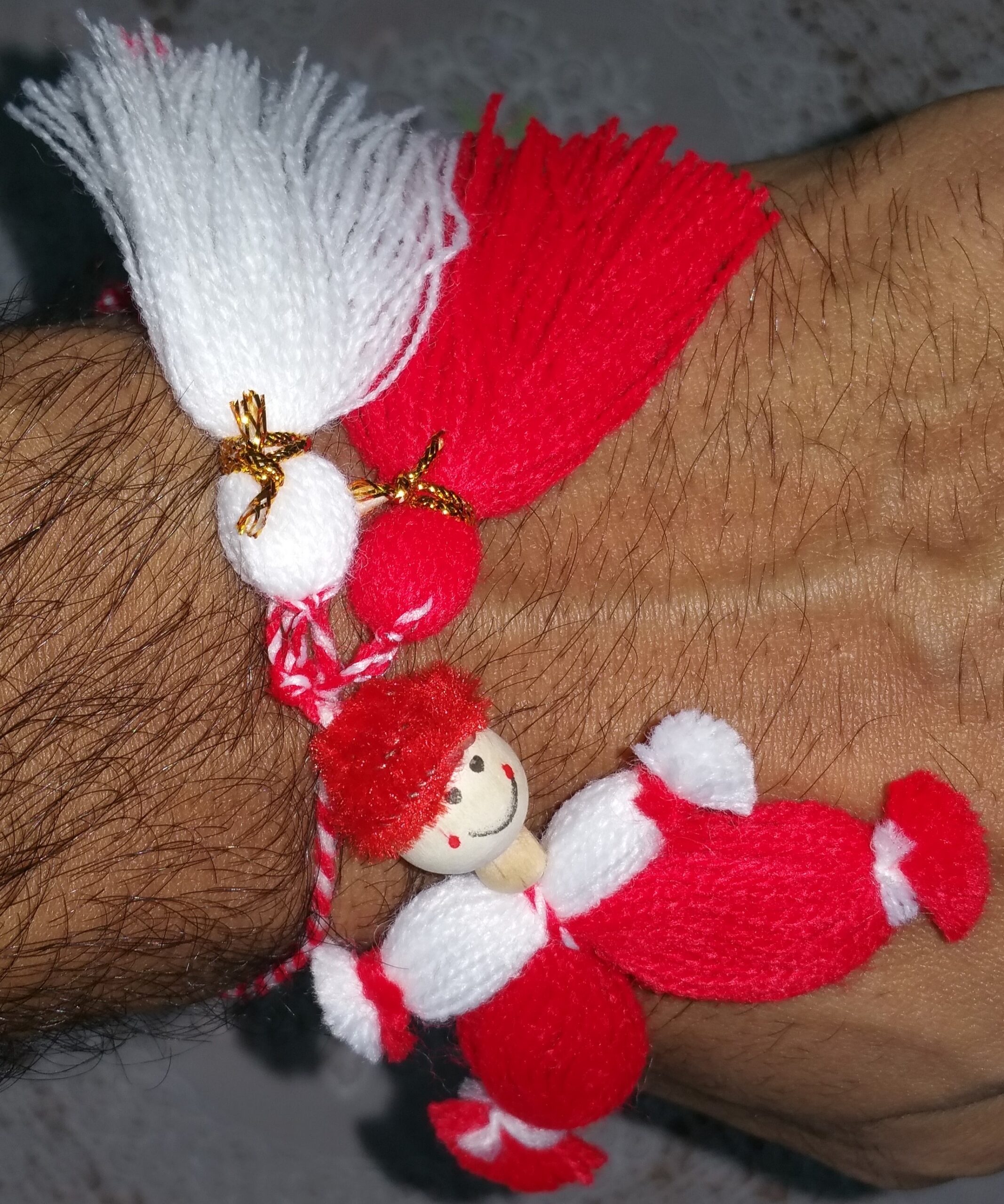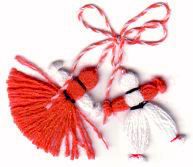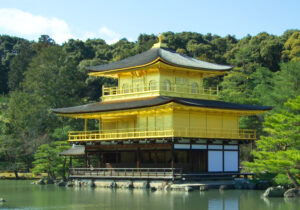

What is Baba Marta ?
- Baba Marta (Bulgarian: Баба Марта, “Granny March”) is the name of a mythical figure who brings with her the end of the cold winter and the beginning of the spring
- The name of the holiday means “Grandma March” in Bulgarian and the holiday and the wearing of Martenitsi are a Bulgarian tradition related to welcoming the spring, which according to Bulgarian folklore begins in March
- The greeting exchanged on this day is Chestita Baba Marta (Bulgarian: Честита Баба Марта, “Happy Baba Marta”), often shortened to ЧБМ on greeting cards
- Her holiday of the same name is celebrated in Bulgaria on March 1 with the exchange and wearing of martenitsi
- Inscribed in 2017 on the UNESCO Representative List of the Intangible Cultural Heritage of Humanity
What is Baba Marta Day
| Baba Marta Day | |
|---|---|

Typical martenitsa
|
|
| Observed by | Bulgaria |
| Date | 1 March |
| Frequency | Annual |
- Grandma Marta Day (or simply Baba Marta, Bulgarian: Баба Марта, “Grandma Marta”) is a holiday celebrated in Bulgaria, on March 1
- Bulgarians celebrate on March 1 a centuries-old tradition and exchange martenitsi on what is called the day of Baba Marta
What is Martenitsa ?
- A Martenitsa (Bulgarian: мартеница ; Macedonian : мартинка Greek : μάρτης ; Romanian : mărțișor) is a small piece of adornment, made of white and red yarn and usually in the form of two dolls, a male and a female
- Martenitsas, usually in the form of a wrist band, small yarn dolls, or tassels, are created by combining red and white colored threads and are worn on that day and throughout March
- Martenitsi are red and white coloured bands or figurines that symbolise health and happiness, a lucky charm against evil spirits
- The tradition of giving friends red-and-white interwoven strings brings health and happiness during the year and is a reminder that spring is near
- An early 20th-century Bulgarian story relates the first Martenitsi to the 7th-century Battle of Ongal between the Bulgar Khan Asparuh and the Byzantines, which resulted in a decisive Bulgar victory
- After the battle, the Bulgarian Khan sent doves with white threads to announce the victory to his main camp. The threads turned bloody during the flight, thus creating the first Martenitsa
Till when are Martenitsi worn ?
When is a Martenitsi taken-off ?
- Martenitsi are worn from Baba Marta Day (March 1) until the wearer first sees a stork, swallow, or blossoming tree (or until late March)
- They are worn until a stork or a blossoming tree is seen, symbolizing the coming of spring, warmer weather, and well being
- Once the stork or blooming tree appears the Martenitsa is taken off and hung on a tree
- People wear martenitsa for a certain period, the end of which usually is connected with the first signs of spring -bird storks.
What are the rules regarding taking-off / discarding a Martenitsa ?
What is the procedure for Taking-off / discarding a Martenitsa ?
- The ritual of finally taking off the Martenitsa is different in different parts of Bulgaria
- Beginning on the first of March, one or more are worn pinned to clothing, or around the wrist or neck, until the wearer sees a stork or swallow returning from migration, or a blossoming tree, and then removes the Martenitsa
- Some people then tie their martenitsa to a tree, others place it under a rock and based on what they find there the next morning guess what kind of a year this one would be
- Some people tie the Martenitsa on a branch of a fruit tree, thus giving the tree health and luck, which the person wearing the Martenitsa has enjoyed themselves while wearing it
- Others put it under a stone with the idea that the kind of creature (usually an insect) closest to the token the next day will determine the person’s health for the rest of the year
- If the creature is a larva or a worm, the coming year will be healthy and full of success
- The same luck is associated with an ant, the difference being that the person will have to work hard to reach success
- If the creature nearest the token is a spider, then the person is in trouble and may not enjoy luck, health, or personal success
- It is common in the spring to see trees festooned in Martenitsas

Martenitsi tied to a blossoming tree, a symbol of approaching spring
 Another tied Martenitsa
Another tied Martenitsa
Blossoming Magnolia full of tied Martenitsi
- Older Bulgarians call it Birch Month as it is around the time that birch trees start growing leaves and giving sap
- Wearing one or more Martenitsi is a very popular Bulgarian tradition. The time during which they are worn is meant to be a joyful holiday commemorating health and long life
- Modern Martenitsi take a wider variety of forms and often incorporate colored beads and other elaboration
- They are given away to friends and family and are worn around the wrist or on clothes
- In the small villages in the mountains people decorate their houses, kids and domestic animals
What is the symbolism of Martenitsa ?
- A typical Martenitsa consists of two small wool dolls, Pizho and Penda (Bulgarian: Пижо и Пенда)
- Pizho, the male doll, is usually predominantly white
- Penda, the female doll, is distinguished by her skirt and is usually predominantly red
- The red and white woven threads symbolize the wish for good health
- They are the heralds of the coming of spring and of new life
- An obvious explanation, and perhaps a common belief people share, is that “red” stands for “life / birth” and “white” denotes “a new / on clear grounds”
- Combined together they mean “newborn”, “rebirth”, and “a new beginning”; a celebration of life and survival
- Another popular explanation is that white stands for wisdom and red for good health, which means that anyone giving you a Martenitsa is wishing you both throughout the new year
- While white as a color symbolizes purity, red is a symbol of life and passion
- Some ethnologists have proposed that, in its very origins, the custom might have reminded people of the constant cycle of life and death, the balance of good and evil, and the sorrow and happiness in human life
- The Martenitsa is also a stylized symbol of Mother Nature, the white symbolizing the purity of the melting white snow and the red setting of the sun, which becomes more and more intense as spring progresses
- These two natural resources are the source of life
- They are also associated with the male and female beginnings, and in their balance, with the need for balance in life
- There are various theories, suggestions, and even several legends involving real historical figures about the symbolism of the red and white colors from which Martenitsa are made
- In March these amulets, worn around one’s wrists and on their attire, can be seen almost everywhere in Bulgaria and in the neighboring regions
- The white color first symbolized man, the power light solar zone
- Later, under the influence of Christian mythology it began to indicate integrity and virginity – white is the color of Christ
- Red represents the woman and health: it is a sign of blood, conception and birth
- In ancient times women’s wedding dresses were red
- Tradition dictates that Martenitsi are always given as gifts, not bought for oneself
- They are given to loved ones, friends, and those people to whom one feels close
- The martenitsa comes in all shapes and sizes – from building packages to strings on a newborn’s arm
- Children usually compete who will get the most
What are traditions similar to Baba Marta ?
- Being a purely pagan ritual by origin, Baba Marta Day is one of the oldest continuing traditions in Christian Europe
- The Bulgarian tradition resembles folklore known in parts of Asia and South America, to wear a lucky bringing friendship bracelet around the wrist until it wears out
- It also resembles the German tradition of hanging empty eggs in blossoming trees during the (now Christian) Eastern folklore and the Persian tradition of hanging fruit in trees at midwinter
- Baba Marta folklore is also present in southern and eastern Serbia where it is a reference as to a freezing weather change after a spring break
- The Romanian holiday Mărțișor is related to Baba Marta
- The Romanian holiday Mărțișor is a variant of Baba Marta
Who is Baba Marta ?
Why is she angry / grumpy ?
- In Bulgarian folklore the name Baba Marta (Bulgarian: Баба Марта, “Grandma March”) evokes a grumpy old lady whose mood swings very rapidly
- Baba Marta (“Grandma March”) is believed to be a feisty lady who always seems to be grudging at her two brothers, January and February, while the sun only comes out when she smiles
- As folklore there are different versions of the Baba Marta tale
- One says that on that day she does her pre-spring cleaning and shakes her mattress for the last time before the next winter – all the feathers that come out of it pour on Earth like snow – the last snow of the year
- The common belief is that by wearing the red and white colors of the Martenitsa, people ask Baba Marta for mercy
- They hope that it will make winter pass faster and bring spring
- The first returning stork or swallow is taken as a harbinger of spring and as evidence that Baba Marta is in a good mood and is about to retire
- According to a widespread story, an old shepherd decided to rise her flocks up in the mountains during the last days of March, thinking that Baba Marta would bestow good weather on her because she was as old as Marta
- Baba Marta became infuriated by being considered old, and asked her younger brother (April) to lend her a few days
- It is believed that Baba Marta is not fond of older women, and they should not under any circumstances cause her anger
- April granted her wish and these days are called “borrowed days”, “zaemnitsi”, or “few days” in the Bulgarian folk tradition
- Marta let out the strong snows and blizzards that froze the shepherd and her flocks in the mountains
- This story can also be found in German folklore, for instance in the “Frau Holle” or Mother Hulda legend
Festival of Baba Marta
- Besides the celebration on March 1, Baba Marta is also celebrated on March 9 (Mladenci) and March 25th (Annunciation)
- The holidays are associated with the last days of winter and the coming of spring
- On these holidays ritual acts are performed which are believed to mellow Baba Marta’s temper
- Participants in her holidays are women, girls, and children

